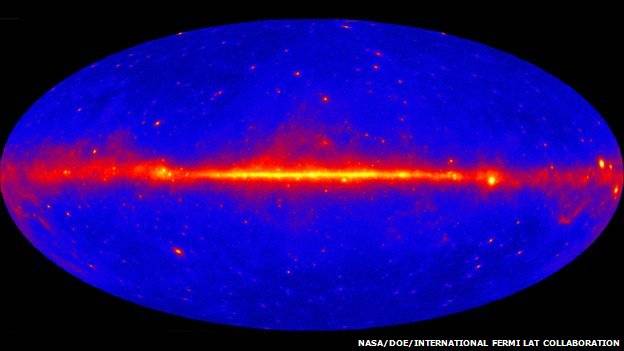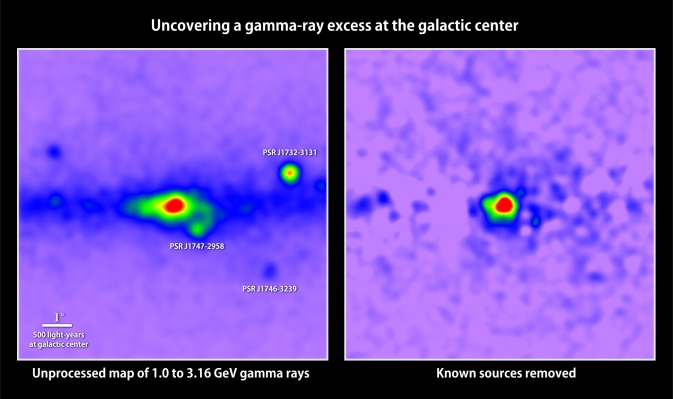waltky
Wise ol' monkey
Granny wantin' to know how dey can see it if it's dark?...

Fermi telescope may change to dark matter hunting
18 January 2013 - The Universe's highest-energy light could finally yield clues to the nature of the "dark matter" that makes up some 85% of the Universe's mass.

Fermi telescope may change to dark matter hunting
18 January 2013 - The Universe's highest-energy light could finally yield clues to the nature of the "dark matter" that makes up some 85% of the Universe's mass.
The Fermi space telescope, designed to catch gamma rays, has seen hints of evidence for dark matter in high-energy gamma rays seen at the galaxy's centre. The Fermi team is now opening a call for ideas on changing how it observes. That may focus efforts on those early hints, opening the possibility to solve one of physics' greatest mysteries. We only know of the existence of dark matter because of its gravitational effects; true to its name, it cannot be seen because it interacts only very weakly with light or normal matter. Proving its existence, and learning something about what it is, has been a holy grail for astrophysicists since the 1930s.
Julie McEnery, project scientist for the Fermi mission, said a deepening dark matter mystery has sparked the call for proposals to change the telescope's mission. "Some of the motivation to explore different observation strategies is from this tentative signal at the centre of the galaxy, but I think even if that wasn't there we would want to go to our community of scientists and ask them, 'based on what you've seen in the data, should we do something different?'," she told the BBC World Service programme Science in Action.

The full sky is seen in the Fermi telescope map; gamma-ray sources abound along the central, galactic plane
Fermi has been a tremendous success at examining some of the most high-energy processes in the cosmos, publishing a catalogue filled with details of the spinning neutron stars known as pulsars, and a wide array of "active galactic nuclei" - probably supermassive black holes. But outside the Fermi team, the focus shifted in early 2012, when a pair of papers on the Arxiv preprint server suggested hints of dark matter within Fermi's data, which are publicly available.
The most popular theory holds that dark matter is made up of relatively heavy particles which, when they encounter one another, "annihilate" with a flash of light that the Fermi telescope can see. "The nice fact which distinguishes this situation from other similar situations with dark matter candidates is that there are no viable astrophysical alternatives," said Lars Bergstrom, who first proposed this idea in a paper in Physical Review D in 1988. "It is a so-called 'smoking gun' signal of dark matter annihilation," Prof Bergstrom told the BBC.
'Bump hunting'

